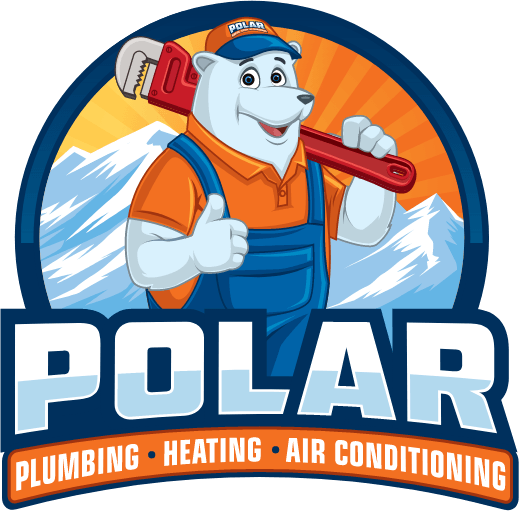When everything is working correctly, your heating system should be able to maintain a consistent temperature throughout the entire home. If you find that some areas of your home always stay much colder or hotter than the rest of your residence, it indicates that there is some issue preventing your heating system from working correctly. With that in mind, here are the most common causes of uneven heating and what you can do to overcome them.
1. Dirty Furnace Filter
Your furnace filter needs to be replaced regularly or else it can drastically limit the effectiveness of your heating system. If you don’t replace the filter, it will eventually become clogged with debris and restrict the airflow into your heating system. If cold air cannot be drawn into the furnace sufficiently, it won’t produce as much heat. A clogged air filter also makes it more difficult for the fan to circulate air throughout the entire duct system. As a result, those rooms that are furthest away from the furnace will usually not get enough hot air and thus always stay colder. The solution to this problem is to make sure to replace your furnace filter every 30 to 90 days.
2. Lack of Maintenance
Furnaces require annual maintenance to continue heating effectively. If you don’t have your heating system professionally maintained, it can suffer from numerous issues that cause it to produce much less heat. For instance, the burners can become so dirty that they can no longer fully combust the gas inside the furnace, and this leads to much less heat being produced. There are also various issues that can cause your furnace to start short cycling, which is when it only runs for a few minutes before shutting off. If the furnace doesn’t run for long enough, those rooms furthest away or near the perimeter of your home will often stay much colder.
3. Ductwork Leaks
Leaking or damaged ductwork is another common cause of uneven heating. If your ducts are leaking, much of the hot air will escape before it reaches those rooms at the furthest ends of the ductwork system. Duct leaks are also a huge source of energy waste that will both increase your heating costs and make your furnace work much harder and run for longer. The solution to this problem is to have your ductwork inspected and either resealed, repaired, or replaced.
4. Closed or Obstructed Vents
Many people try to overcome issues with uneven heating by closing the air vents in some rooms. The idea is that this will help direct more of the heat to where it is needed most. While this sounds like a good idea, the truth is that it will generally make the uneven heating issues even worse.
If too many vents are closed or blocked by furniture, it leads to an increase in static pressure inside the duct system. Static pressure refers to how much airflow resistance there is. When the static pressure increases, it can make it nearly impossible for the fan to properly circulate air throughout the entire duct system due to the increased resistance. As a result, very little air will flow out of the vents furthest away from the furnace and those rooms will always stay colder. For this reason, it is recommended that you always keep at least 75% of your vents open to prevent the static pressure from building too high.
5. Insufficient Insulation or Air Leaks
Uneven heating can also be caused by issues with your home that are unrelated to your heating system. If you don’t have sufficient insulation in your walls, floors, and ceiling; it can allow much of the hot air to escape and the cold air from outside to seep in. The same issues can occur due to air leaks around your windows and doors or in your walls, attic, crawl space, etc. Sealing your windows and doors, and patching any cracks or other leaks can help to prevent these issues. You may also need to add additional insulation to those parts of the home that always stay colder.
6. Improperly Sized Furnace
The saying that bigger is better isn’t necessarily true when it comes to HVAC systems. Oversized furnaces are one of the most common causes of uneven heating. If the furnace is too large for the home, it will cause it to produce too much heat in a short amount of time. This leads to short cycling and will cause the furnace to run only for a few minutes. When this happens, it generally won’t run for long enough to fully heat the entire residence.
Undersized furnaces can also create similar issues. In this case, the furnace generally won’t ever be able to produce enough heat to adequately warm the entire building. Those rooms closest to the furnace will typically be fine. However, there generally won’t be enough remaining heat in the duct system to warm up the rooms further away. If your furnace is either undersized or oversized, the only effective solution is to have it replaced with a unit that is the proper size for your home.
7. Improper Thermostat Location
The location of your thermostat is far more important than you may realize and can have a major impact on how well your furnace can heat the entire location. Your thermostat should always be centrally located in the home in an area that you use frequently and accurately reflects the temperature throughout most of your home. It also needs to be in an area that is not exposed to sunlight and away from any vents.
If the thermostat is exposed to sunlight, in a room that stays warmer than the rest of the home, or too close to any vents, it can interfere with its ability to accurately measure the temperature. These situations will typically lead to the thermostat signaling the furnace to shut down prematurely before the entire home is fully heated. The solution to this problem is to have your thermostat moved to a different location where it can more accurately measure the temperature.
8. Lack of Zone Control
Larger homes and those with more than one story often have far more issues with uneven heating. In multi-level homes, it is common for the upper floors to always be hotter and the basement or lower levels to constantly stay colder. Homes that are spread out over a much larger area often have similar issues with those rooms nearest the exterior staying cold. In either case, the solution may be to install an HVAC zone-control system.
This type of system splits the building up into smaller zones. This is done using dampers that are installed inside the ductwork, which can open and close to control the airflow to that zone. Each zone will have its own thermostat and temperature controls. In this way, you can direct more heat to where it is needed most and less heat to those zones that always stay warmer. This will not only help to keep your heating more consistent, but it can also greatly reduce your energy bills since you won’t have to heat the entire building at once.
At Polar Plumbing, Heating & Air Conditioning, our certified HVAC technicians can help determine the cause of your uneven heating issues and how best to overcome them. We specialize in furnace repairs and maintenance, as well as new furnace installations, and we also service and install air conditioners and heat pumps. We are a full-service plumbing company, offering water heater and garbage disposal services, drain cleaning and rooting, and all types of plumbing repairs. To schedule a furnace inspection or tune-up in Newburgh, contact Polar Plumbing, Heating & Air Conditioning today.

